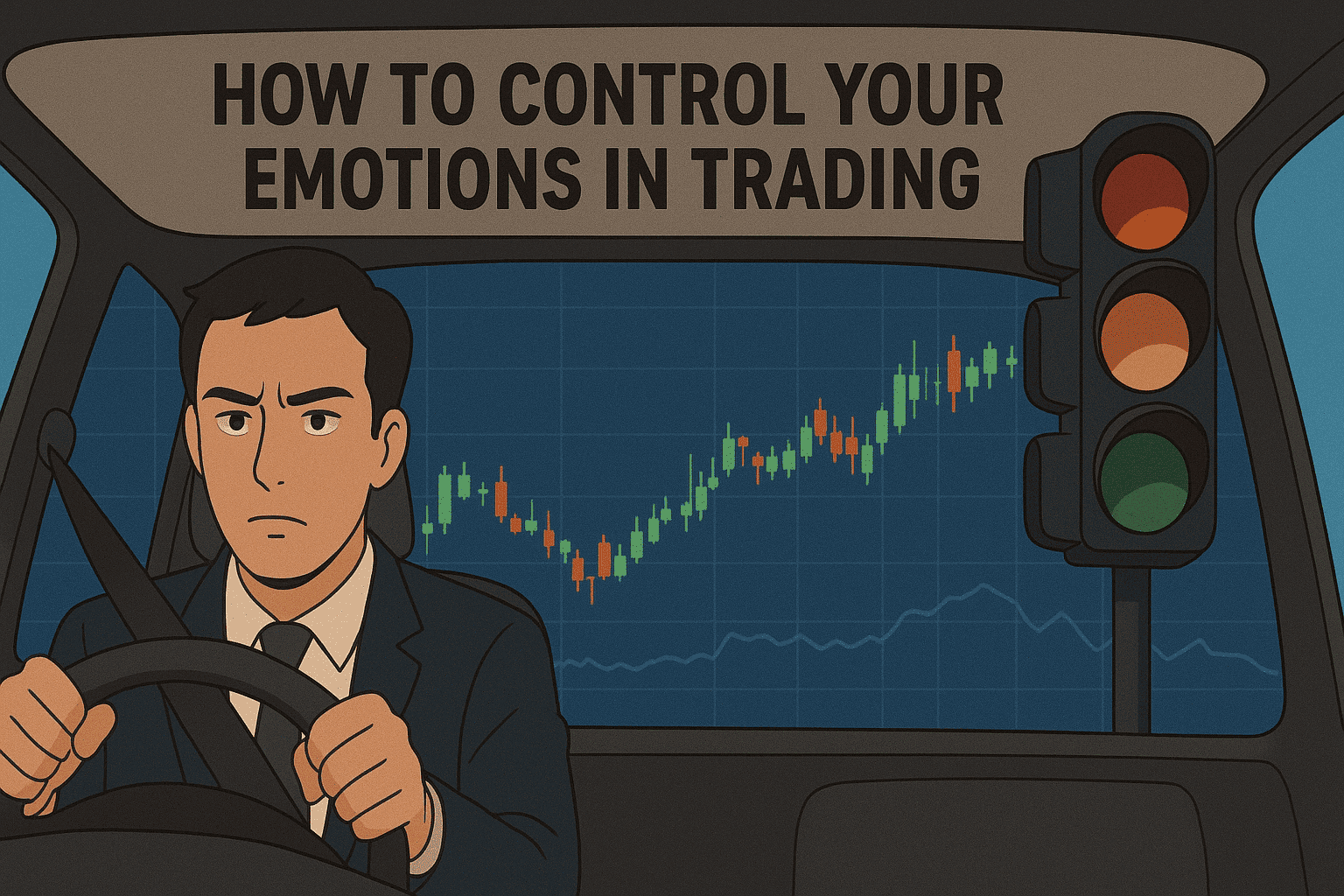Want to build a strong trading psychology strategy?
Think of it this way — charts, indicators, and news are like the engine of your car. But even the most powerful engine is useless without a skilled driver. That “driver” is your psychology. Without the right mindset, discipline, and control, no strategy can consistently work in the markets.
Every trader has faced this moment: you spot a perfect breakout, heart racing, palms sweating, you’re ready to hit Buy, but a voice in your head whispers, “What if it fails?”
You hesitate, miss the trade, and then watch the stock rally 2%.
Sound familiar?
This is where mastering trading psychology becomes the difference between consistency and chaos.
Why Trading Psychology is Important
Trading psychology is simply how your emotions, habits, and mental discipline impact your decisions, whether you consider it or not, but in reality, it’s present in every click you make.
And that is why most traders keep changing their strategy on failure, when in actuality, the real problem is their own mindset.
Let’s understand this: you board a flight, you know the destination, you’ve agreed on where the emergency exits are, but halfway through turbulence, you panic, grab a parachute, and jump.
That’s what emotional exits look like, leaving the trade mid-flight and guaranteeing a bad outcome.
The same happens when you overtrade or remove stop losses. It feels like taking control, but it’s really your emotions hijacking the cockpit.
How to Master Trading Psychology Strategy?
So how do you stay calm and disciplined when the market is moving fast?
The solution is to have a trading psychology strategy that is as concrete as your technical strategy. Here’s how to build one step by step:
1. Start with a Written Plan
A trading plan is your GPS — it shows you the road even in heavy fog.
- Document your rules: Write down entry setups, stop-loss levels, target exits, and position sizing.
- Predefine risk: Limit yourself to risking only 1–2% of capital per trade so a single loss never derails you.
- Decide when to stop trading: Set a daily profit/loss limit — and step away once you hit it.
Example:
“I will buy above VWAP with at least 2× average volume, stop-loss at previous swing low, and exit when R:R hits 1:2.”
This way, you know when to act and when to stay patient — no second-guessing in the heat of the moment.
2. Journal Every Trade
Your trading journal is your personal black box — it records what happened before, during, and after each flight.
- Write your why: Log why you entered the trade, your confidence level, and your emotions.
- Note the result: Whether it was a win or a loss doesn’t matter — what matters is whether you followed your plan.
- Review weekly: Find patterns in your behavior, maybe you break rules after two losses in a row or get overconfident after big wins.
Over time, this becomes your most powerful tool. You can literally see yourself growing from an emotional trader to a disciplined one.
3. Build Emotional Circuit Breakers
Markets will always move faster than you expect, but that doesn’t mean you must react instantly.
- Pause before you act: Take a deep breath or count to five before pressing Buy or Sell.
- Step away after a loss: Give yourself 5–10 minutes to reset your mind before taking another trade.
- Use automation: Alerts and bracket orders can keep you from acting impulsively.
Think of this as installing ABS brakes in your trading car — even on slippery roads, you won’t lose control.
4. Practice Risk Management Like a Pro
Risk management is not optional; it’s your seatbelt. You hope you never need it, but when the accident (a bad trade) happens, it saves your life.
- Position sizing: Trade small enough that five consecutive losses still keep you in the game.
- Respect your stop-loss: Never widen it because “the stock will come back.”
- Avoid revenge trades: Losses are part of the game, doubling down out of anger only makes them worse.
5. Work on Your Mindset Daily
Trading is like professional sports — you can’t just show up on match day.
- Morning routine: Spend 10 minutes preparing for the day, mark key levels, plan scenarios.
- Mindfulness practice: Meditation or deep breathing builds mental toughness.
- Post-market review: Celebrate following your plan even if you had a red day.
Over time, you’ll build what athletes call mental muscle memory — staying calm even when the scoreboard (P&L) is against you.
Simple Ways to Remember Trading Psychology Rules
Think of your mind as the steering wheel; no matter how bumpy the market gets, you have to keep it steady to stay on course.
Your trading plan is like a GPS; it can’t remove every pothole, but it keeps you heading in the right direction even when prices move wildly.
And your risk management is your seatbelt; you don’t expect a crash, but you know it’s there to protect your capital when trades go wrong.
These simple visuals will stick with you and pop into your mind during live market sessions, helping you stay calm, trust your process, and avoid emotional trades.
Want to take this to the next level?
Join Stock Pathshala’s Stock Market Mentorship Program, where we train you to build discipline and apply a complete trading psychology strategy — all in real market conditions.
Conclusion
Trading psychology isn’t a “soft skill” — it’s the core of long-term success. You can have perfect technical setups, but if fear and greed control you, consistency will remain out of reach.
Start small:
- Journal your next 10 trades.
- Follow your stop-loss no matter what.
- Walk away when emotions rise.
Before investing capital, invest your time in learning Stock Market.
Fill in the basic details below and a callback will be arranged for more information:




